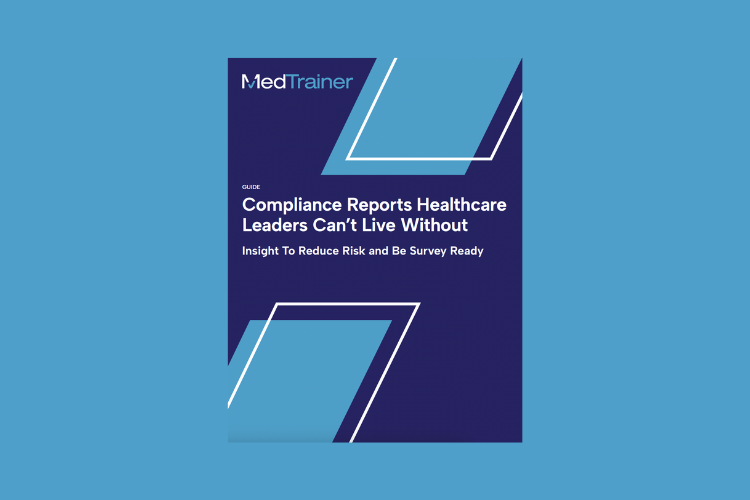Patient safety and the quality of care provided by healthcare organizations are of utmost importance. By developing safeguards that enhance patient outcomes — such as a healthcare risk management program — organizations take a proactive approach by tracking and analyzing risks, effectively reducing medical errors and elevating quality of care.
Here’s how risk management in the healthcare industry can support your practice.
What Is Healthcare Risk Management?
Healthcare risk management aims to equip organizations and providers with the knowledge and tools needed to identify, assess, and mitigate potential risks associated with patient care, safety, and overall operational processes.
Risk management in the healthcare industry plays a crucial role in enhancing patient safety, regulatory compliance, and the quality of care provided by healthcare facilities. Comprehensive programming enables healthcare professionals and administrators to track and analyze various risk factors, such as medical errors, adverse events, patient complaints, and safety incidents.
By monitoring, collecting, and analyzing processes and procedural data, organizations are able to employ effective risk management strategies and preventive measures. This ultimately reduces the likelihood of adverse events and improves patient outcomes. Furthermore, the benefits of risk management software in healthcare help ensure compliance with industry standards and regulations, safeguarding patient information, and maintaining a safe, secure healthcare environment.
How Can Healthcare Risk Management Help Organizations Improve Patient Safety and Quality of Care?
The goal of healthcare risk management is to improve patient safety and the quality of care within healthcare organizations. Here are some of the objectives achieved with proper planning:
- Early detection of potential risks. Robust risk management in healthcare planning allows providers to collect and analyze data from incident reports, enabling them to identify patterns and trends before actual harm occurs. By proactively spotting potential risks, healthcare organizations can take corrective actions promptly, preventing adverse events and ensuring patient safety.
- Prevention of adverse events. Effective healthcare risk management should enable healthcare professionals to investigate incidents thoroughly. By understanding the root causes of adverse events or near-misses, organizations can implement targeted improvements and prevent similar incidents in the future. This evidence-based decision-making approach empowers healthcare teams to learn from past mistakes and continuously enhance patient safety protocols.
- Process standardization. Standardization of processes is critical in ensuring consistency and reliability in healthcare operations. Healthcare risk management serves as a system of checks and balances. A well-oiled risk management program holds all departments accountable to organizational standards. With process standardization, there is increased visibility into identified risks, transparency, and accountability across the organization. This helps to ensure that all staff members follow the same protocols to consistently address risks and maintain patient safety.
- Data-driven decision making. Risk management in the healthcare industry is based on collecting and analyzing data to enhance patient safety and reduce incidents. This data-driven approach provides healthcare organizations with valuable insights into the most common risks and their underlying causes. Armed with this information, healthcare administrators and quality improvement teams can make informed decisions and allocate resources where they are most needed, resulting in more targeted risk reduction strategies and improved patient outcomes.
- Regulatory compliance. Compliance with healthcare regulations and industry standards is paramount to ensure patient safety and quality of care. One of the benefits of Irish management software in healthcare allows organizations to monitor and ensure their staff’s adherence to various regulatory requirements. Furthermore, by proactively identifying areas of non-compliance and addressing them promptly, healthcare organizations can avoid potential legal and financial consequences while maintaining high standards of patient care.
Incorporating Technology Into Healthcare Risk Management
Effective healthcare risk management is all about streamlining risk management activities to improve patient safety. To optimize efficiency in risk management operations, healthcare organizations are turning to technology as a viable solution.
Here are some of the benefits of risk management software in healthcare:
Incident Reporting and Tracking
Top-notch healthcare risk management includes seamless reporting and tracking of incidents within the organization. Online incident reporting allows for real-time submission of reports, eliminating delays and ensuring timely resolution.
Customizable forms enable the collection of specific data and supporting documentation, aiding in identifying trends and potential risks. Moreover, the ability to submit reports anonymously encourages employees to report incidents without fear of reprisals.
A dynamic healthcare risk management software allows for different security levels, enabling confidential internal and external escalations when required. It also offers data visualization tools, helping healthcare organizations monitor the effectiveness of interventions and improvement initiatives over time.
Document Management for Healthcare Risk Management Activities
Proper documentation of risk management activities is vital for regulatory compliance and legal purposes.
An innovative compliance software provides a centralized platform to create, upload, and manage documents related to healthcare risk management, policies, and procedures. It streamlines the process of requesting approvals, distributing documents for review, and tracking acknowledgments from staff members.
Automatic tracking of document revisions and approvals ensures a comprehensive audit trail, which can be invaluable in demonstrating compliance during incidents or inspections.
Training and Education
Standardized training is essential for ensuring that all staff members follow the same processes and procedures, minimizing the risk of errors and adverse events.
The best healthcare risk management software includes or integrates with a learning management system (LMS) to deliver and track standardized training programs.
Administrators can assign specific training modules to employees, monitor their progress, and generate reports to ensure compliance with mandatory training requirements.
Corrective and Preventive Action (CAPA) Management
CAPA is a fundamental aspect of risk management in healthcare, involving the identification and implementation of corrective actions to address existing issues and preventive actions to mitigate potential risks.
A well-rounded compliance software facilitates your entire CAPA strategy, from capturing incidents and conducting root cause analyses to assigning and tracking corrective actions. It streamlines communication and collaboration among stakeholders involved in resolving incidents, ensuring accountability, and timely resolution.
Tracking and Reporting
Comprehensive tracking and reporting functionalities are vital for analyzing risk trends, evaluating the effectiveness of risk management strategies, and demonstrating compliance to regulatory bodies.
Healthcare risk management software typically offers customizable reports, graphical data visualization, and performance dashboards. These features enable administrators and quality improvement teams to make data-driven decisions, identify areas for improvement, and track progress over time.

The best compliance and credentialing reports to surface critical insights and keep you survey ready.
MedTrainer Supports Your Risk Management in Healthcare
Risk isn’t something you can overlook in a healthcare setting. To stay on top of it and minimize risk across the scope of operations, it’s important to look at the benefits of leveraging technology to improve healthcare risk management. MedTrainer’s comprehensive healthcare compliance software is designed to support your practice.
Learn more about our all-in-one compliance platform when you schedule a demo today.
